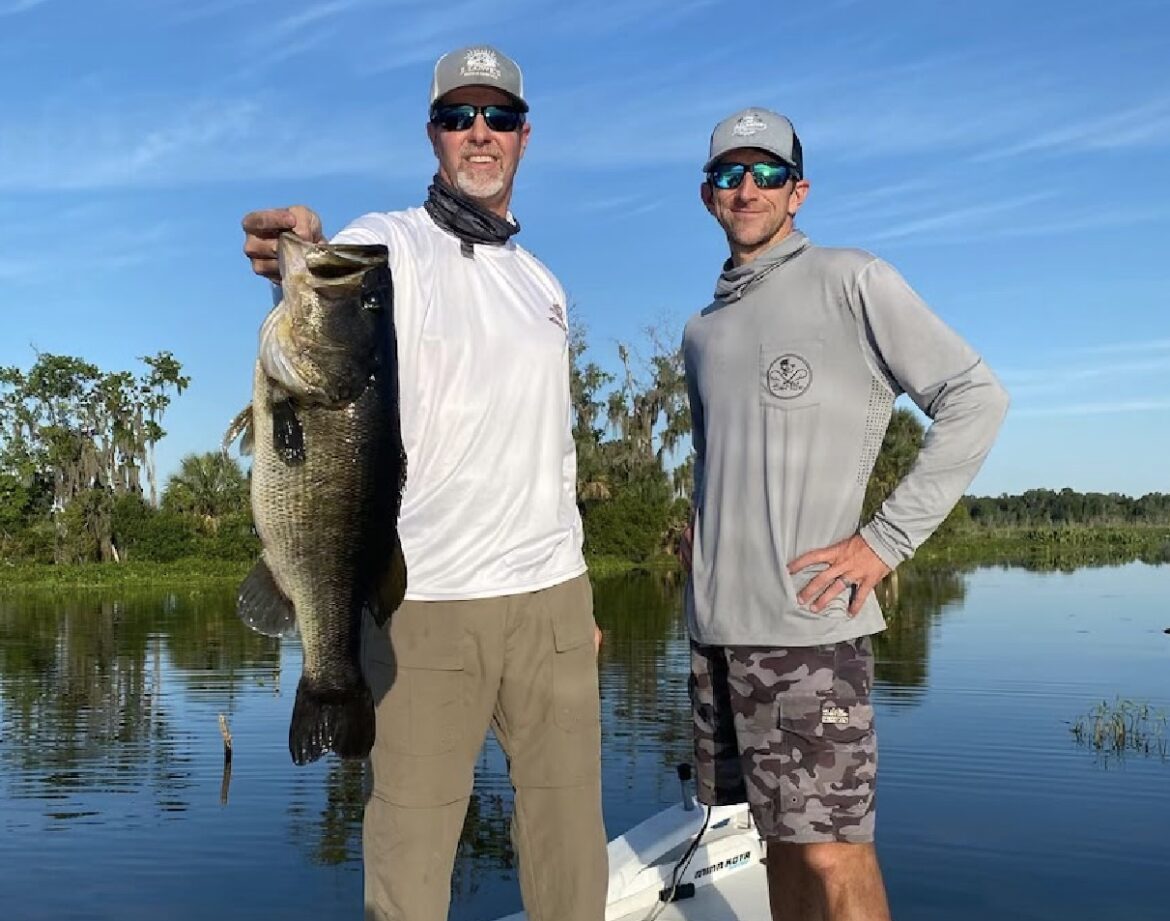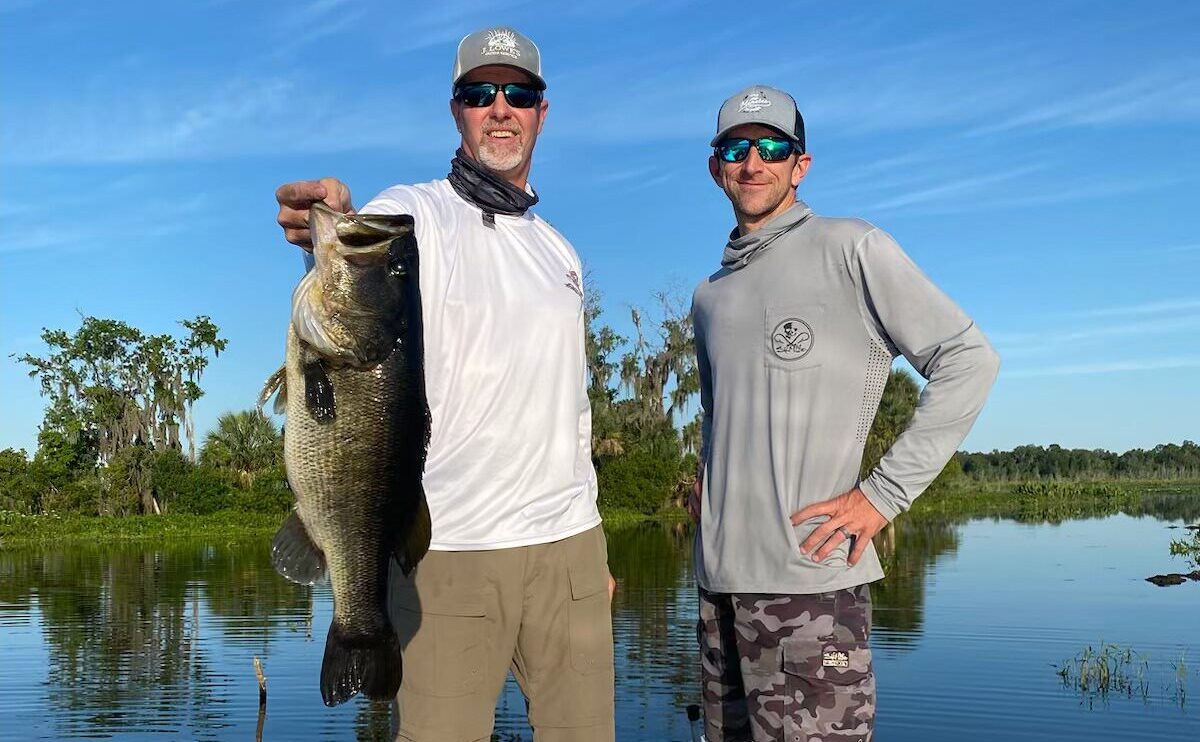Bass Fishing: 5 STEPS for How to Catch Bass
Written By: Captain Jason Lowe
Welcome to the World of Bass Fishing
Welcome to the exciting world of bass fishing – a place filled with non-stop action, where every cast brings the promise of heart-pounding excitement and adrenaline-filled battles. As an experienced angler and freshwater fishing guide based in Cedar Key, Florida, I’m here to share my insights and expertise with you to help you master the art of bass fishing.
I understand the learning how to fish for bass is not as easy as it looks – That’s why I want to discuss the different aspects of bass fishing that will set you up for a great experience! In this blog post, we’ll dive into 5 key steps to help you become a successful bass angler. By learning about the ideal conditions, choosing the right bait and essential gear, understanding the best techniques for bass fishing, and practicing responsible fish handling, you’ll be an expert in no time!
Step 1: Ideal Conditions For Bass Fishing
Picking the ideal conditions when bass fishing is a critical step to achieving success. This is because bass tend to be more active and responsive during specific weather conditions. There’s no doubt that I prefer calmer water, especially when I’m topwater fishing. When the wind gets up, the fish tend to lay off the topwater bite, mostly because they can’t hear or see it due to the rough water.
Cloud cover also plays an important role when targeting these fish. Bass are often more active during low light conditions, such as overcast days. If I can have a day with calm water and cloud cover, I’ll be casting with topwater lures for as long as I can! Early morning and late evening are usually great times to fish, but sometimes the topwater bite can be on all day in the right conditions.
As you can see, choosing the optimal conditions for bass fishing significantly enhances an angler’s chances of success. By considering factors like weather, water conditions, and time of day, anglers can maximize their opportunities for an enjoyable bass fishing experience.
Step 2: Choosing the Right Bass Bait
Choosing the best bait for bass fishing depends on various factors, including water conditions, time of day, weather, and the behavior of the bass. In my experience, fishing with topwater lures is addictive. I like throwing topwater pretty much year-round. It will definitely slow down certain times of the year, but it nevertheless it remains exciting.
When deciding on which lures and rigs you’re going to use, it is important that you are choosing fishing equipment that is compatible with the rod’s power and action, in order to ensure optimal performance.
Here are my TOP 5 favorite bass baits!
1. Topwater Prop Baits:
- These lures create enticing surface disturbances that mimic injured baitfish, making them irresistible to hungry bass. Early in the morning and late in the evening, when bass are more active near the surface, I reach for baits like the Devil’s Horse, Lane Changer, or Buzz Bait. These lures can be purchased on websites like Amazon, Mustad Fishing, or Cabelas.
2. Toads – A Secret Weapon:
- I almost always have a toad tied on, specifically favoring the Watermelon Seed Buzz Toad from Producto Lure. This soft plastic bait generates a reaction style strike. It can also be fished in cover, like grass, lily pads, and reeds.
3. Poppers:
- Popper baits create a popping sound and surface disturbance that can trigger aggressive strikes from bass, especially during calm water conditions. Typically, this topwater lure is designed to imitate injured baitfish or frogs, creating surface disturbance and enticing bass to strike.
4. Walkers:
- Walk-the-dog style baits like the Skitterwalk can mimic injured baitfish darting on the surface, enticing bass to strike. Typically Walkers are characterized by their side-to-side zigzag action when retrieved.
5. Buzz Baits:
- Buzz Baits are topwater lures that create a commotion on the surface, mimicking the sound of fleeing prey like injured baitfish or frogs. Buzz baits typically elicit a reaction-style strike, although they are slightly less weedless compared to toads.
Step 3: Must Needed Equipment
When fishing for bass, you’ll want to use fishing rods and reels that are specifically designed for freshwater bass fishing. For bass fishing, rod lengths typically range from 6 to 7.5 feet, with longer rods providing longer casting distances and shorter rods offering more accuracy and control.
Power ratings of rods range from ultralight to heavy, with medium-heavy and medium power rods being most commonly used for bass fishing. The power rating determines the rod’s ability to handle lure weight and fish size. Match your fishing line weight and type (monofilament, fluorocarbon, or braided) to the rod and reel specifications as well as the fishing technique you’ll be using.
Here are my two recommendations as it relates to the best rods/reels when bass fishing:
1. Medium-Heavy Bass Rods:
- Opt for medium-heavy bass rods with fast tips for better sensitivity and hook-sets. My preference are the Fitzgerald Rods.
2. Quality Bait-Casting Reels:
- Pair your bass rod with a quality baitcasting reel featuring a smooth drag system. The gear ratio will depend on what baits you are using but I like higher ratios and prefer Fitzgerald Reels.
Ultimately, the best kind of fishing rod for bass fishing is one that matches your fishing style, the type of lures you’ll be using, and the fishing conditions you’ll encounter. Experimenting with different rod types and finding what works best for you is key to successful bass fishing.
Step 4: Techniques for Bass Fishing
Patience is Key:
There are several different techniques when using topwater baits. One critical tip I always emphasize is not to set the hook on sight or sound. Set the hook when you feel the fish. Topwater bites can be explosive, tempting even avid anglers to set the hook too early. Timing is everything, and the more you fish topwater, the more you’ll get a feel for it.
Observe the Fish:
The fish will also give you a lot of information on the water. Sometimes they’ll demolish the bait, while other days they may not strike as hard or may short strike. You have to be able to adapt to that bite. For example, there are days when they don’t want a noisy plug but will hit a weightless fluke or senko-style bait. It’s still essentially topwater or subsurface, so you’ll still get a good show when they decide to eat it.
Step 5: Responsible Handling Practices
Responsible handling practices are crucial when bass fishing to ensure the well-being of the fish and the sustainability of bass populations. Anglers should use appropriate gear, such as suitable rod and reel setups, to minimize stress on the fish during the fight and when landing them.
It’s important to avoid overhandling the bass and to wet hands before handling them to avoid removing their protective slime coat. Using landing nets carefully and gently, avoiding lifting the fish by the mouth with the net, and practicing catch and release responsibly are also key.
Anglers should revive exhausted fish by holding them upright in the water to regain strength before releasing them. Proper fish grips and following local fishing regulations, including size and bag limits, are essential for ethical and sustainable bass fishing practices. These responsible handling practices contribute to the conservation and preservation of bass populations, ensuring enjoyable fishing experiences for generations to come.
Conclusion: Elevating Your Bass Fishing Skills
In conclusion, mastering bass fishing requires a combination of knowledge, experience, and adaptability. By incorporating the techniques, tips, and strategies discussed in this guide, you’ll elevate your bass fishing skills and increase your success on the water.
Remember to choose the right equipment, understand bass behavior, practice different fishing techniques, and always prioritize responsible fish handling practices. Whether you’re fishing in the calm waters of spring, the hot summer months, the colorful foliage of fall, or the cool winter days, bass fishing in Florida offers year-round excitement and endless opportunities for adventure!
So gear up, hit the water, and immerse yourself in the thrilling world of bass fishing – where every cast is an opportunity for unforgettable memories!
Looking to book a freshwater fishing charter today? Book Now!



